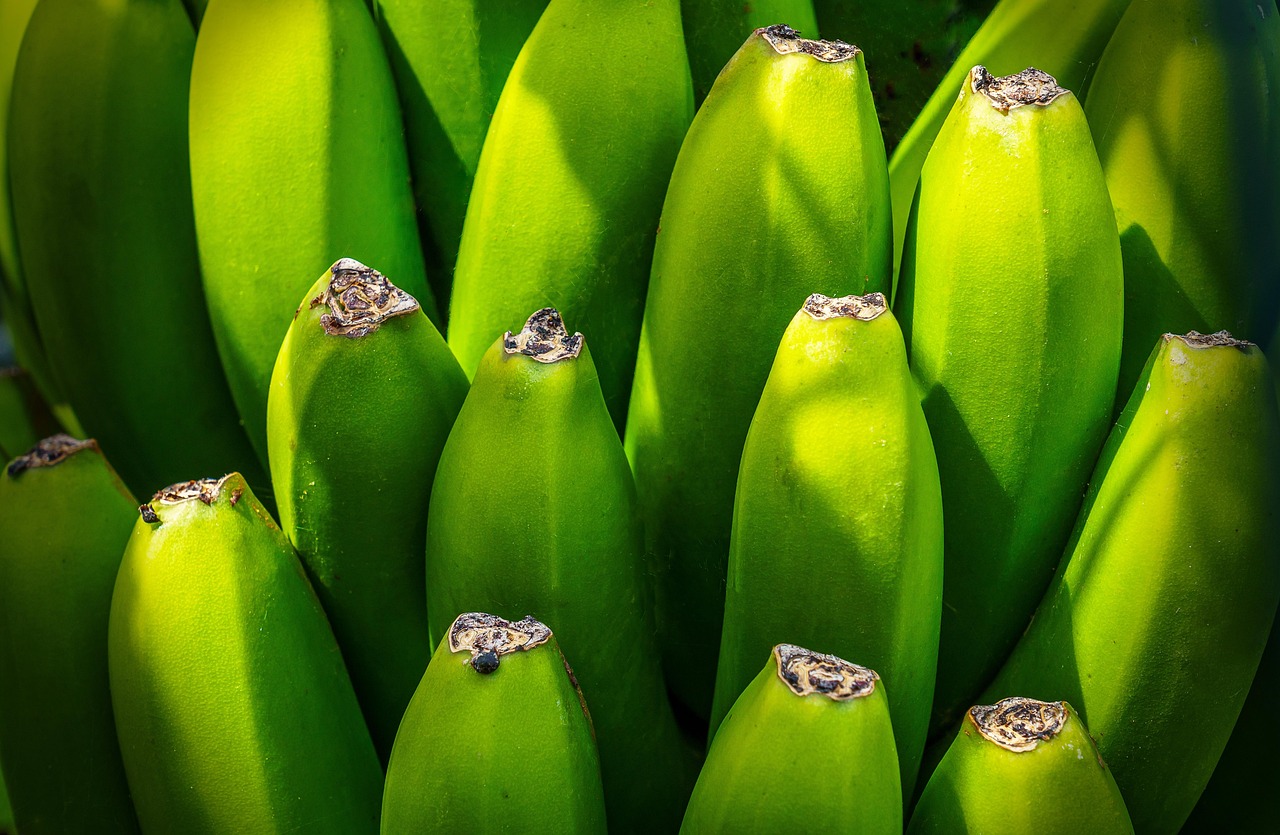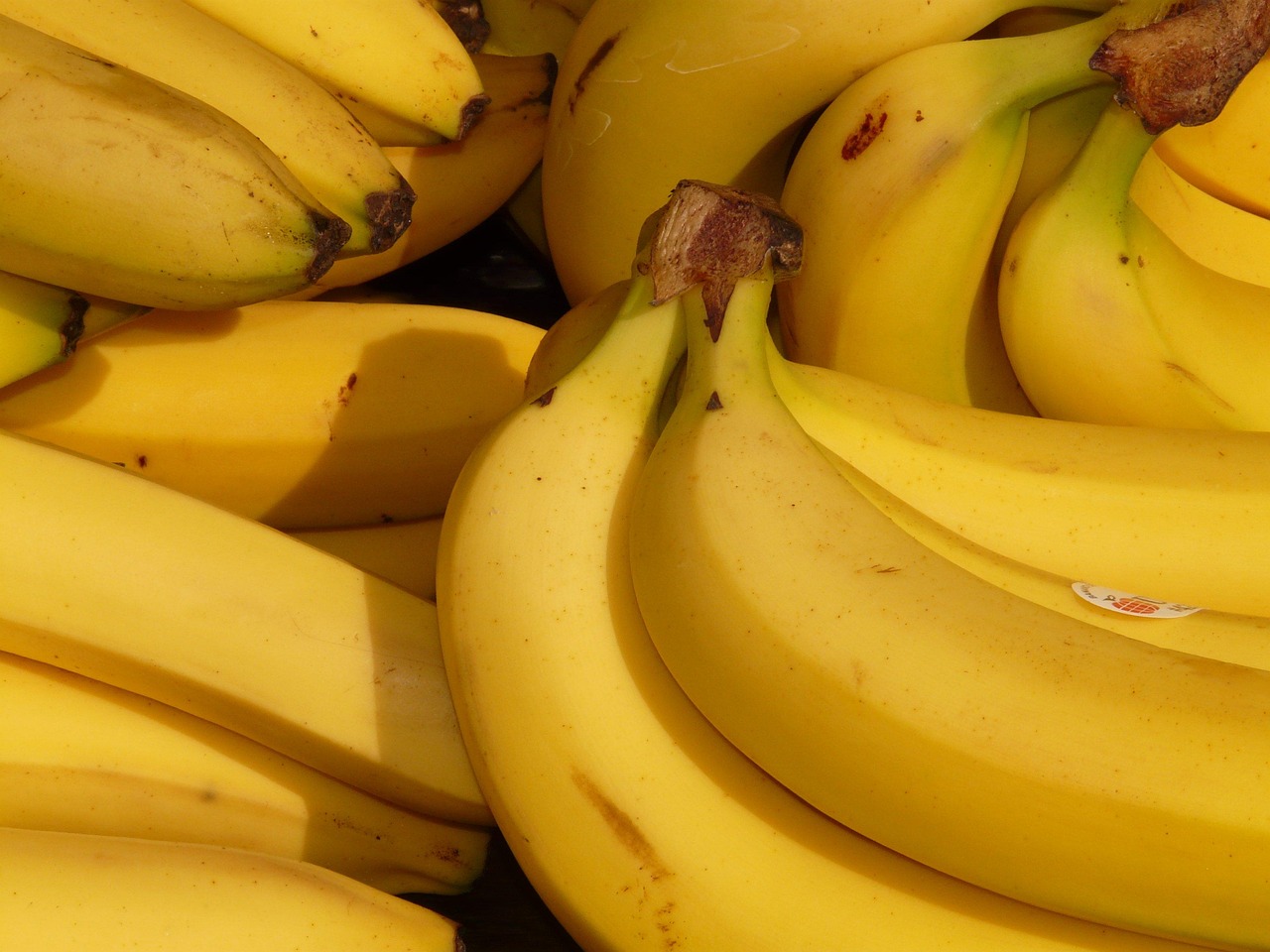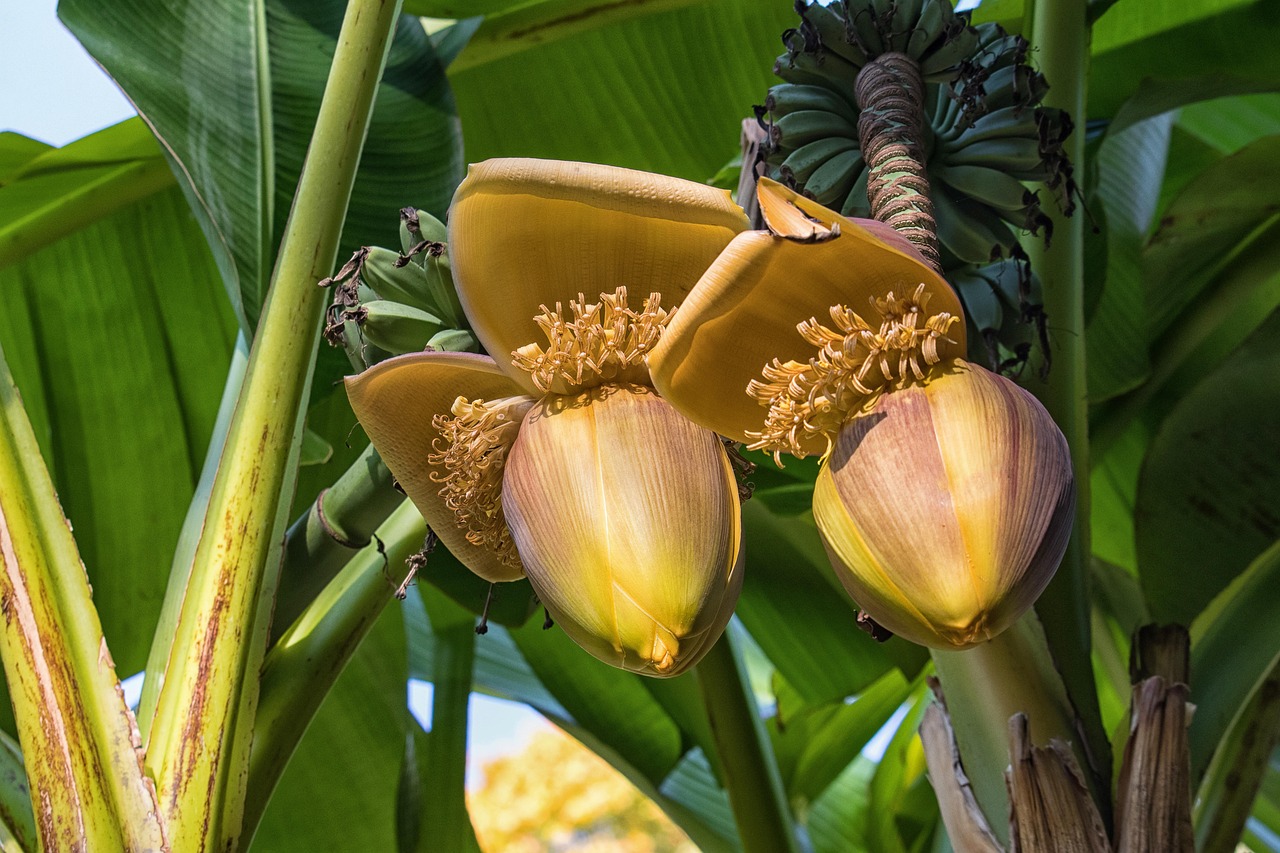Banana trees typically grow at a rate of 1 to 2 feet per month under optimal conditions. With proper care, gardeners can expect their banana trees to reach maturity within 9 to 12 months.
Understanding Banana Tree Growth
Banana trees are a popular choice for tropical home gardeners due to their fast growth and the delicious fruit they produce. Unlike traditional trees, banana plants are technically large herbs. They have a unique growth habit that makes them fascinating to cultivate. Understanding their growth rate is crucial for successful gardening.

The growth rate of banana trees can vary based on several factors, including soil quality, water availability, sunlight, and temperature. In ideal tropical conditions, these plants can grow remarkably fast, often reaching heights of 10 to 30 feet depending on the variety. For home gardeners, knowing what influences this growth can help in maintaining healthy and productive plants.
Factors Influencing Growth Rate
Several key factors affect how quickly banana trees grow. Here are some of the most important:
- Soil Quality: Well-draining, nutrient-rich soil supports faster growth.
- Water Supply: Regular watering promotes healthy growth. However, overwatering can lead to root rot.
- Sunlight: Banana trees thrive in full sun, requiring at least 6-8 hours of direct sunlight daily.
- Temperature: Ideal temperatures range from 75°F to 95°F. Cold temperatures can stunt growth.
Growth Stages of Banana Trees
Banana trees go through distinct stages of growth, each with unique characteristics. Understanding these stages can aid gardeners in providing the necessary care at each point.

| Growth Stage | Description | Timeframe |
|---|---|---|
| Planting | Starting with a corm or sucker planted in good soil. | 0-1 Month |
| Juvenile | Initial leaf growth; the plant starts to establish. | 1-4 Months |
| Mature Vegetative | Rapid leaf and height growth; the plant grows up to 2 feet per month. | 4-8 Months |
| Flowering | The plant develops a flower stalk and begins to produce fruit. | 8-12 Months |
| Harvesting | Mature bananas are ready for harvest. | 12 Months+ |
Each stage requires different care techniques. For example, during the juvenile stage, it is essential to ensure that the plant receives adequate water and nutrients to support its rapid growth. Fertilization should be tailored to promote leafy growth in this phase.
Caring for Banana Trees to Maximize Growth
To optimize the growth of banana trees, gardeners should focus on proper care techniques. Here are some tips:
- Fertilization: Use a balanced fertilizer rich in potassium and nitrogen to promote healthy growth.
- Pest Management: Regularly check for pests like aphids and spider mites that can hinder growth.
- Mulching: Applying mulch helps retain moisture and suppress weeds around the base of the plant.
- Pruning: Remove dead leaves and any offshoots that may compete for nutrients.
By implementing these care strategies, tropical home gardeners can create an environment that supports robust banana tree growth. With patience and attention, these plants can become a vibrant part of any garden.

Understanding Different Banana Varieties
When growing banana trees, it’s essential to recognize that different varieties exhibit varied growth rates and characteristics. Selecting the right type for your tropical garden can significantly influence your gardening experience. Here are some popular banana varieties suitable for home gardeners:
- Cavendish: This is the most common variety found in grocery stores. It grows quickly and produces sweet, large bananas.
- Dwarf Brazilian: A smaller variety that reaches about 5 to 6 feet tall. It is ideal for limited spaces and has a unique flavor.
- Red Dacca: Known for its reddish-purple skin, this variety offers a sweet taste and a distinct texture. It can grow up to 8 feet tall.
- Blue Java: Also known as the “ice cream banana,” it has a blueish peel and is known for its creamy texture and vanilla flavor.
The choice of variety can affect not only the growth rate but also the taste and appearance of the fruit. Some varieties may require more specific care, so understanding their needs is crucial.
Soil Requirements for Banana Trees
The success of banana tree growth is heavily influenced by soil conditions. Here are key aspects to consider when preparing soil for banana cultivation:

- Drainage: Banana trees prefer well-draining soil. Heavy clay soils can lead to root rot.
- Nutrient Content: High organic matter content supports growth. Incorporating compost can enhance soil fertility.
- pH Level: Aim for a soil pH between 5.5 and 7.0. Testing the soil can help determine if amendments are necessary.
To create optimal soil conditions, consider conducting a soil test before planting. This will provide insights into nutrient levels and pH balance, allowing you to amend the soil accordingly.
Watering Practices for Optimal Growth
Watering is another critical factor that influences the growth rate of banana trees. Proper watering practices can promote healthy growth while preventing issues such as disease or water stress. Here are some guidelines:
- Frequency: Water banana trees regularly, especially during dry periods. Ensure the soil remains moist but not waterlogged.
- Amount: A deep watering is preferable. This encourages deep root growth, which is vital for stability and nutrient uptake.
- Seasonal Adjustments: Adjust watering frequency based on rainfall and temperature changes. During hotter months, more frequent watering may be necessary.
In addition to these practices, using mulch around the base of the plant can help retain moisture and regulate soil temperature, benefiting overall growth.
Pest and Disease Management
Banana trees are susceptible to various pests and diseases that can hinder their growth. Early detection and management are vital in maintaining plant health. Here are some common issues and their solutions:
| Pest/Disease | Description | Management Strategies |
|---|---|---|
| Aphids | Small insects that suck sap from leaves, causing damage. | Use insecticidal soap or introduce beneficial insects like ladybugs. |
| Black Sigatoka | A fungal disease causing leaf spots, reducing photosynthesis. | Apply fungicides and ensure proper spacing for air circulation. |
| Spider Mites | Tiny pests that cause yellowing of leaves and webbing. | Increase humidity around plants and use miticides if necessary. |
Regular monitoring of plants can help catch these issues early, ensuring that banana trees remain healthy throughout their growth cycle.
The Role of Temperature in Growth Rate
Temperature plays a crucial role in the growth of banana trees. These plants thrive in warm conditions, making them ideal for tropical climates. Here are some important temperature-related factors:
- Optimal Range: Banana trees grow best in temperatures between 75°F to 95°F. Extreme temperatures can slow growth or damage the plant.
- Cold Sensitivity: Temperatures below 50°F can harm banana trees. If you live in a cooler area, consider protecting your plants during cold snaps.
- Heat Management: In extremely hot climates, providing shade during peak sunlight hours can help prevent heat stress.
By understanding temperature requirements, gardeners can take appropriate measures to support their banana trees’ growth throughout the year.
Fertilization Techniques for Banana Trees
Proper fertilization is essential for maximizing the growth rate of banana trees. These plants are heavy feeders, requiring a variety of nutrients to support their rapid growth and fruit production. Understanding the best practices for fertilization can lead to healthier plants and better yields.
Here are some key aspects of fertilizing banana trees:
- Nutrient Requirements: Banana trees require high levels of potassium, nitrogen, and phosphorus. A balanced fertilizer with a ratio such as 8-10-10 is often recommended.
- Timing: Fertilize banana trees every 6 to 8 weeks during the growing season. This ensures consistent nutrient availability.
- Application Method: Apply fertilizers in a ring around the base of the tree, avoiding direct contact with the stem to prevent burning.
Organic vs. Synthetic Fertilizers
Gardeners can choose between organic and synthetic fertilizers, each offering unique benefits. Here’s a comparison:
| Type | Advantages | Disadvantages |
|---|---|---|
| Organic | Improves soil health, promotes microbial activity, slow-release nutrients. | May require more frequent applications, slower nutrient availability initially. |
| Synthetic | Quick nutrient release, easy to apply, predictable results. | Can harm soil health over time, may lead to nutrient runoff and environmental issues. |
The choice between organic and synthetic fertilizers often depends on the gardener’s preferences and goals. Many gardeners find that a combination of both provides optimal results.
Mulching Benefits for Banana Trees
Mulching is an important practice that can enhance the growth of banana trees. It involves covering the soil around the base of the plant with organic or inorganic materials. Here are some benefits:
- Moisture Retention: Mulch helps retain soil moisture, reducing the frequency of watering needed.
- Weed Suppression: A layer of mulch can prevent weed growth, reducing competition for nutrients.
- Temperature Regulation: Mulch helps maintain stable soil temperatures, protecting roots from extreme heat or cold.
Common mulching materials include straw, wood chips, grass clippings, and compost. When applying mulch, ensure it is kept a few inches away from the plant’s base to prevent rot.
Understanding Flowering and Fruiting Stages
The flowering and fruiting stages are critical milestones in the growth cycle of banana trees. Understanding these stages helps gardeners manage their plants effectively to maximize fruit production.
Flowering Stage
The flowering stage usually occurs 8 to 12 months after planting. This is when the banana plant sends up a flower stalk from the center of its leaves. Here are some important points regarding this stage:
- Timeframe: Flowering typically happens after the plant has developed sufficient leaves (around 9 to 12 leaves).
- Pollination: Most banana plants produce fruit without pollination, but environmental conditions can affect fruit set.
- Caring for Flowers: Ensure adequate water and nutrients during this stage to support fruit development.
Fruiting Stage
After flowering, bananas will begin to develop fruit. This stage requires careful attention to ensure successful maturation:
- Time Until Harvest: Bananas typically take 3 to 6 months to mature after flowering.
- Nutritional Needs: Continued fertilization during this stage is crucial for healthy fruit formation.
- Pest Management: Monitor for pests that may target developing fruit, such as fruit flies or aphids.
The quality of care during these stages directly impacts the quantity and quality of the harvest. Gardeners should be attentive and responsive to their plants’ needs during this crucial time.
Harvesting Techniques for Banana Trees
When the bananas reach their mature size, it’s essential to know how to harvest them correctly. Proper harvesting techniques ensure that the bananas ripen well and maintain quality:
- Timing: Harvest bananas when they are plump and green. A slight yellowing indicates they are ripe for picking.
- Cuts: Use a sharp knife or pruning shears to cut the entire bunch from the plant, leaving some stem attached to the fruit.
- Avoiding Damage: Handle harvested bunches carefully to prevent bruising or damage that may affect ripening.
Once harvested, bananas can be stored at room temperature until ripened further. Understanding these harvesting techniques helps ensure that home gardeners enjoy a bountiful crop from their banana trees.
Post-Harvest Care and Storage of Bananas
After harvesting bananas, proper post-harvest care is crucial to maintain their quality and prolong their shelf life. Here are some essential tips for handling and storing bananas:
- Ripening: Place harvested bananas in a cool, dark place to allow them to ripen naturally. Ethylene gas produced by bananas will help accelerate the ripening process.
- Separation: If you have multiple bunches, separate them to reduce bruising and allow even ripening. This prevents the bananas from pressing against each other and causing damage.
- Storage Temperature: Keep ripe bananas at room temperature. Refrigeration can cause the skin to turn dark, but the fruit inside remains fresh.
- Use Quickly: Consume ripe bananas within a few days for the best flavor and texture, as they will continue to ripen and eventually spoil.
By following these post-harvest practices, gardeners can enjoy the fruits of their labor for an extended period while ensuring peak flavor and quality.
Common Challenges for Banana Growers
While growing banana trees can be rewarding, gardeners may face several challenges. Understanding these challenges can help in developing effective strategies to overcome them:
- Pests: Besides aphids and spider mites, banana trees can be affected by nematodes and weevils. Regular monitoring and integrated pest management strategies are vital.
- Diseases: Fungal diseases such as Panama disease can devastate banana crops. Rotating crops and using resistant varieties can help mitigate this risk.
- Environmental Factors: Extreme weather conditions, like heavy winds or droughts, can impact banana growth. Providing windbreaks or irrigation systems can help protect the plants.
Being proactive about these challenges allows gardeners to safeguard their banana trees and ensure a successful harvest.
Benefits of Growing Banana Trees in Home Gardens
Growing banana trees in home gardens offers numerous benefits beyond just producing fruit. Here are some key advantages:
- Aesthetic Value: Banana trees add a tropical feel to landscapes with their large, lush leaves and striking appearance.
- Sustainability: Homegrown bananas reduce the carbon footprint associated with transporting fruit from commercial farms.
- Nutritional Value: Bananas are rich in vitamins, minerals, and fiber, making them a nutritious addition to any diet.
- Community Engagement: Sharing homegrown bananas with neighbors can foster community connections and encourage gardening among friends and family.
The benefits of cultivating banana trees extend beyond the garden, enriching both the grower’s life and the surrounding community.
Final Thoughts
Growing banana trees can be a fulfilling endeavor for tropical home gardeners. By understanding the growth rate, care requirements, and best practices from planting to harvesting, gardeners can successfully cultivate these tropical wonders. The journey from planting to enjoying fresh bananas involves attention to detail, patience, and a commitment to ongoing learning about the plants’ needs.
The combination of proper fertilization, watering, pest management, and harvesting techniques plays a significant role in achieving healthy plants and plentiful yields. While challenges may arise, being proactive and adapting to the needs of banana trees will lead to successful growth and fruit production.
In summary, banana trees not only provide delicious fruits but also enhance the beauty of home gardens. With the right knowledge and care, any gardener can enjoy the rewards of growing this remarkable plant while contributing to a sustainable lifestyle. Whether for personal enjoyment or community sharing, the experience of growing bananas is one filled with joy and satisfaction.
